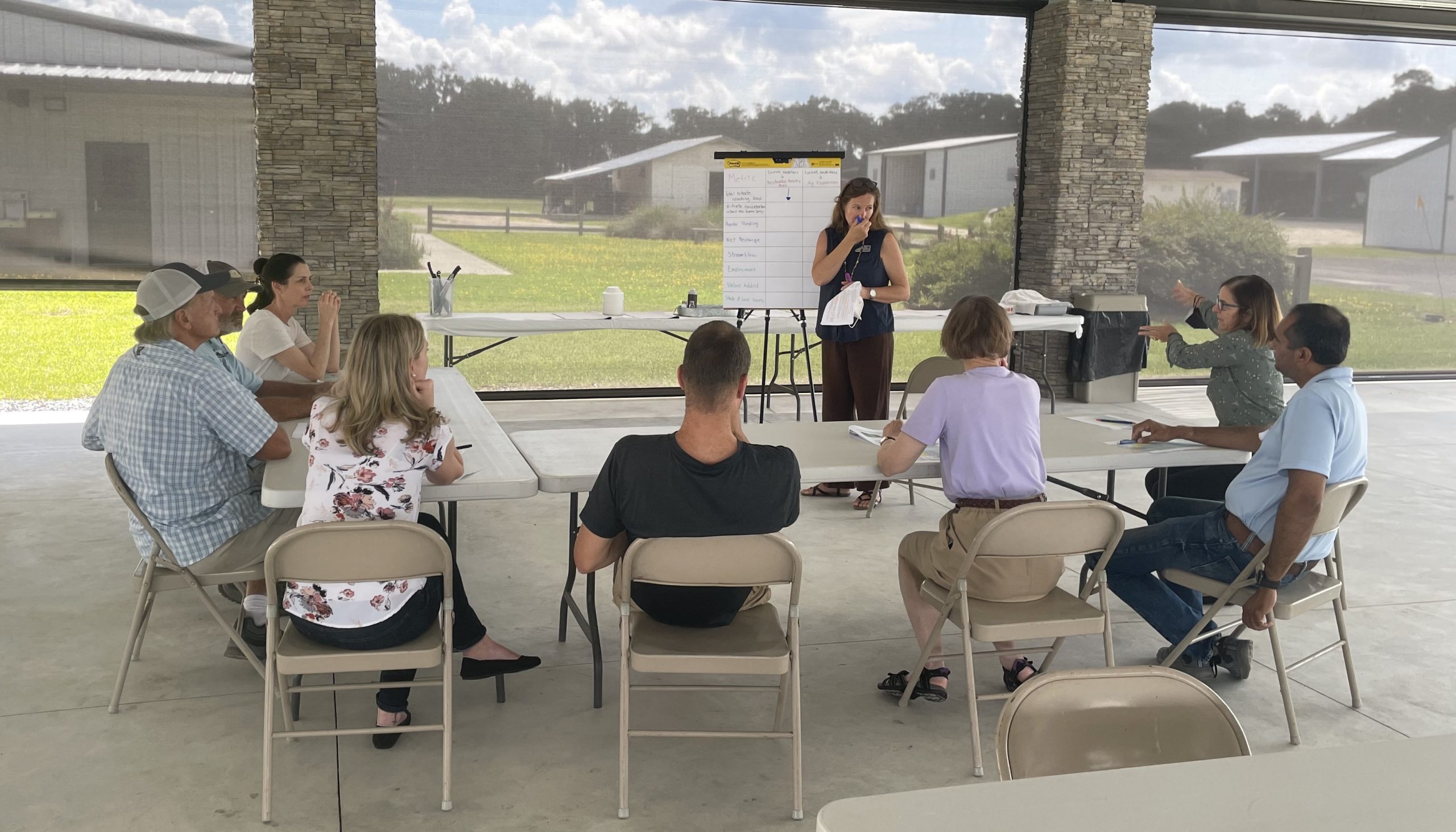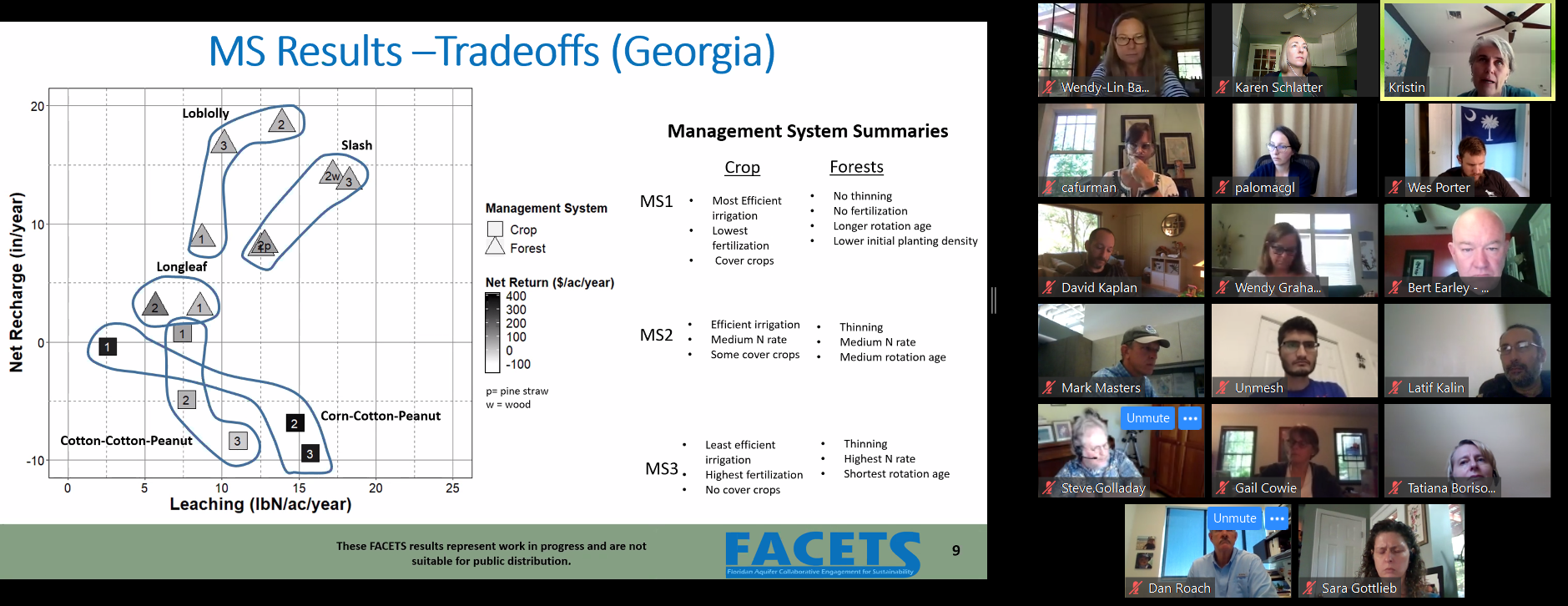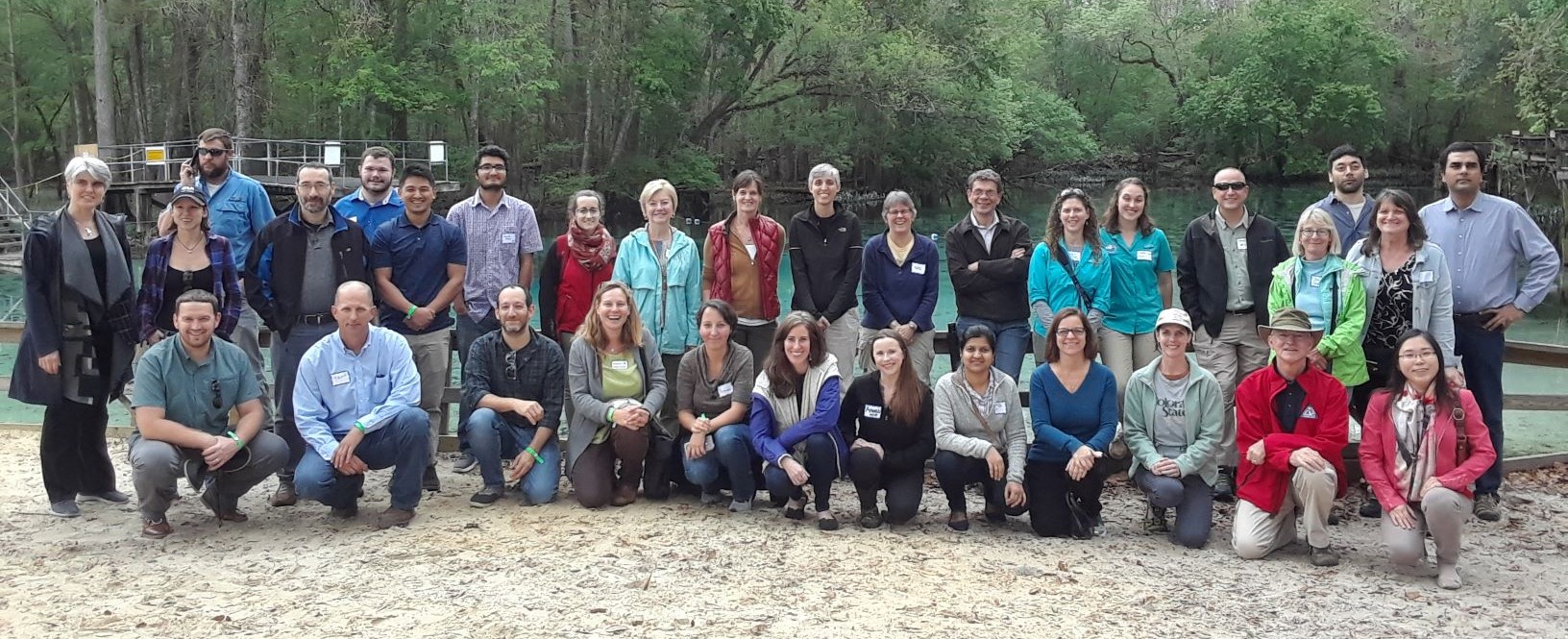Looking into the future, imagining different scenarios, identifying choices, and exploring tradeoffs -- all to ensure a sustainable future for the Upper Floridan Aquifer and the regional economy -- can seem overwhelming. How do we know what scenarios to consider? How do we know that the information we build our scenarios on is sound? How do we explore situations and potential tradeoffs from different perspectives?
One major objective of the project is to bring stakeholders and experts throughout the region together to explore these questions collaboratively.
Stakeholder collaboration and contributions were achieved through:
- Project Advisory Committee (PAC)
- Participatory Modeling Process (PMP)
- Stakeholder surveys and focus groups
Participatory Modeling Process (PMP) and Scenario Analyses
The goal of the Participatory Modeling Process (PMP) was to create a venue for scientists and stakeholders to come together and share perspectives, identify knowledge gaps, and improve the accuracy, credibility, and utility of project results. Through the PMP process, stakeholders collaborated with the project team in model development and interpretation of model outputs. When modeling does not integrate stakeholder perspectives, the findings may be of little relevance or use to decision-makers and resource managers. Over the course of the project, scientists and stakeholders collaboratively generated and discussed management scenarios, trade-offs, and incentives related to current and future land use, water management, and rural economic development.



PMP and Reflexive Monitoring (RM)
Interviews, surveys, and focus groups helped understand stakeholder and project team perspectives about the value of knowledge integration and barriers to co-production; preferences related to scenario types; satisfaction with scenario choices; and ability to contribute to the process.

